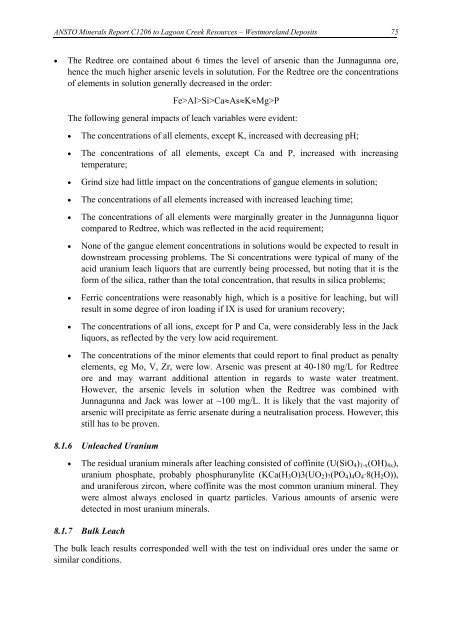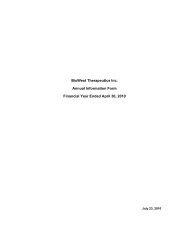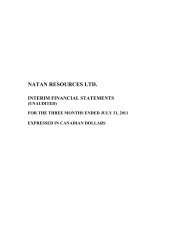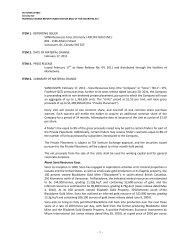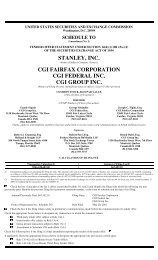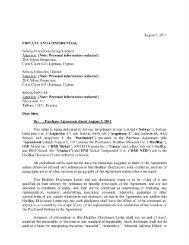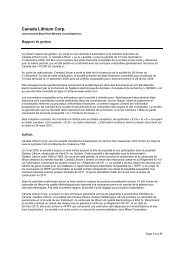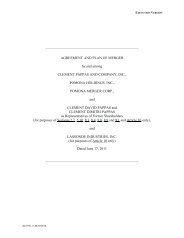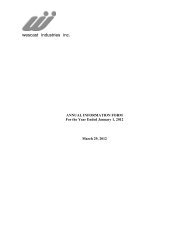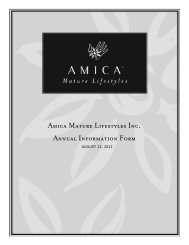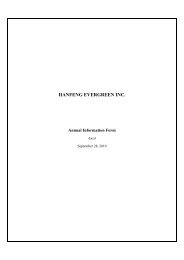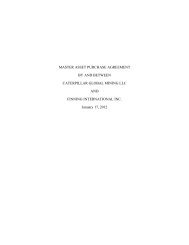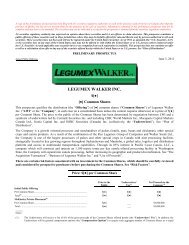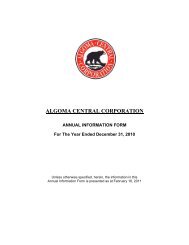Laterite Leach Tests
Laterite Leach Tests
Laterite Leach Tests
Create successful ePaper yourself
Turn your PDF publications into a flip-book with our unique Google optimized e-Paper software.
ANSTO Minerals Report C1206 to Lagoon Creek Resources – Westmoreland Deposits<br />
• The Redtree ore contained about 6 times the level of arsenic than the Junnagunna ore,<br />
hence the much higher arsenic levels in solutution. For the Redtree ore the concentrations<br />
of elements in solution generally decreased in the order:<br />
Fe>Al>Si>Ca≈As≈K≈Mg>P<br />
The following general impacts of leach variables were evident:<br />
• The concentrations of all elements, except K, increased with decreasing pH;<br />
• The concentrations of all elements, except Ca and P, increased with increasing<br />
temperature;<br />
• Grind size had little impact on the concentrations of gangue elements in solution;<br />
• The concentrations of all elements increased with increased leaching time;<br />
• The concentrations of all elements were marginally greater in the Junnagunna liquor<br />
compared to Redtree, which was reflected in the acid requirement;<br />
• None of the gangue element concentrations in solutions would be expected to result in<br />
downstream processing problems. The Si concentrations were typical of many of the<br />
acid uranium leach liquors that are currently being processed, but noting that it is the<br />
form of the silica, rather than the total concentration, that results in silica problems;<br />
• Ferric concentrations were reasonably high, which is a positive for leaching, but will<br />
result in some degree of iron loading if IX is used for uranium recovery;<br />
• The concentrations of all ions, except for P and Ca, were considerably less in the Jack<br />
liquors, as reflected by the very low acid requirement.<br />
• The concentrations of the minor elements that could report to final product as penalty<br />
elements, eg Mo, V, Zr, were low. Arsenic was present at 40-180 mg/L for Redtree<br />
ore and may warrant additional attention in regards to waste water treatment.<br />
However, the arsenic levels in solution when the Redtree was combined with<br />
Junnagunna and Jack was lower at ~100 mg/L. It is likely that the vast majority of<br />
arsenic will precipitate as ferric arsenate during a neutralisation process. However, this<br />
still has to be proven.<br />
8.1.6 Unleached Uranium<br />
• The residual uranium minerals after leaching consisted of coffinite (U(SiO4)1-x(OH)4x),<br />
uranium phosphate, probably phosphuranylite (KCa(H3O)3(UO2)7(PO4)4O4·8(H2O)),<br />
and uraniferous zircon, where coffinite was the most common uranium mineral. They<br />
were almost always enclosed in quartz particles. Various amounts of arsenic were<br />
detected in most uranium minerals.<br />
8.1.7 Bulk <strong>Leach</strong><br />
The bulk leach results corresponded well with the test on individual ores under the same or<br />
similar conditions.<br />
75


